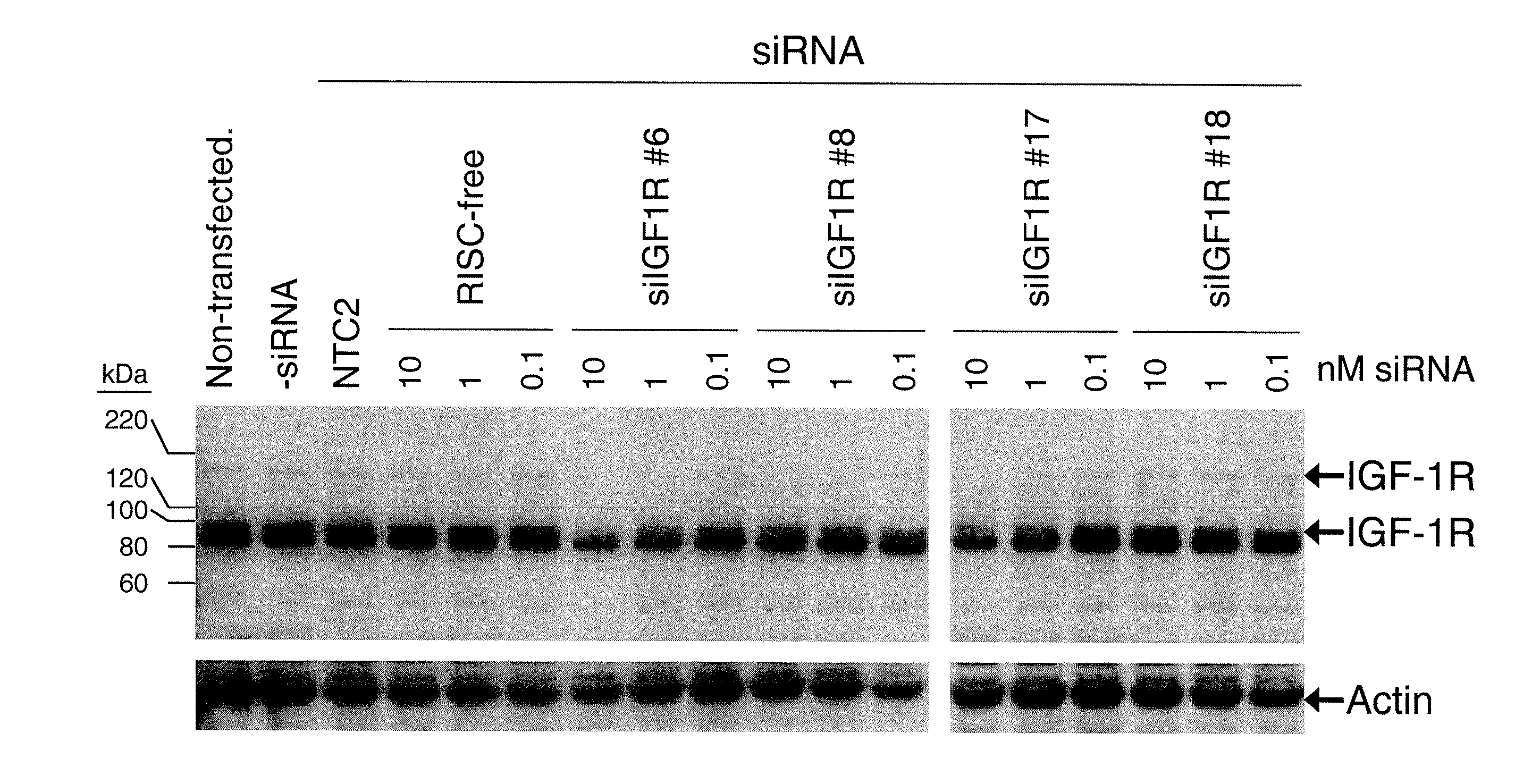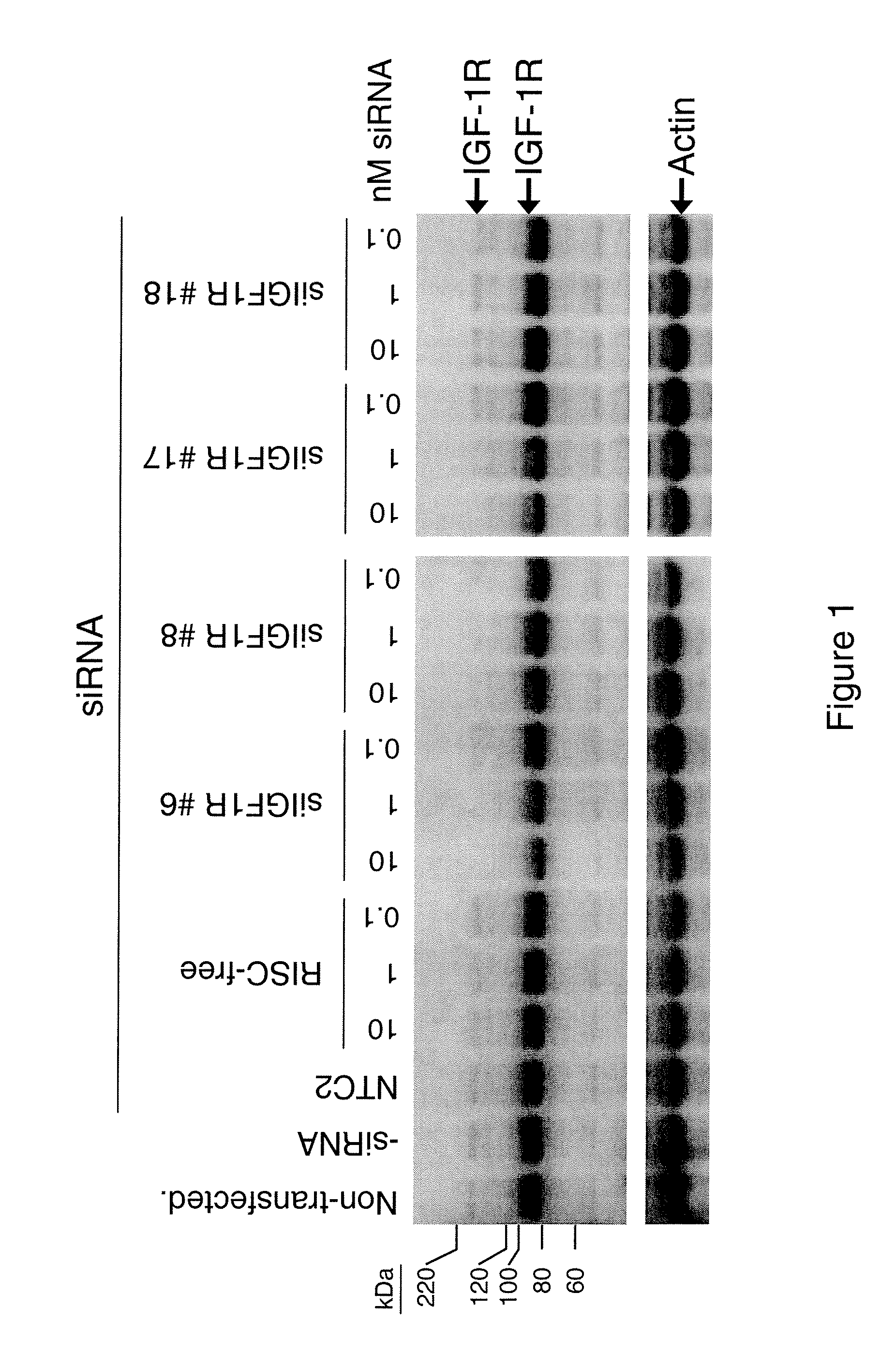RNAi-MEDIATED INHIBITION OF IGF1R FOR TREATMENT OF OCULAR ANGIOGENESIS
a technology of igf1r and igf1r, which is applied in the direction of drug compositions, extracellular fluid disorders, metabolic disorders, etc., can solve the problems of hyperglycemia in a number of ways, tissue damage, accumulation of sorbitol, etc., and achieve the effect of lowering the activity of the bound complex of igf-1/igf-1r and reducing the pre-angiogenic and angiogenic cellular activity
- Summary
- Abstract
- Description
- Claims
- Application Information
AI Technical Summary
Benefits of technology
Problems solved by technology
Method used
Image
Examples
example 1
Interfering RNA for Specifically Silencing IGF1R
[0110] The present study examines the ability of IGF1R-interfering RNA to knock down the levels of endogenous IGF-1R protein expression in cultured HeLa cells.
[0111] Transfection of HeLa cells was accomplished using standard in vitro concentrations (0.1-10 nM) of IGF1R siRNAs, siCONTROL RISC-free siRNA #1, or siCONTROL Non-targeting siRNA #2 (NTC2) and DHARMAFECT® #1 transfection reagent (Dharmacon, Lafayette, Colo.). All siRNAs were dissolved in 1× siRNA buffer, an aqueous solution of 20 mM KCl, 6 mM HEPES (pH 7.5), 0.2 mM MgCl2. Control samples included a buffer control in which the volume of siRNA was replaced with an equal volume of 1× siRNA buffer (-siRNA). Western blots using an anti-IGF-1RP antibody were performed to assess IGF-1R protein expression. This antibody recognizes both the 200-kDa IGF-1R precursor and 97-kDa mature IGF-1RP proteins. The IGF1R siRNAs are double-stranded interfering RNAs having specificity for the fol...
PUM
| Property | Measurement | Unit |
|---|---|---|
| temperature | aaaaa | aaaaa |
| temperature | aaaaa | aaaaa |
| temperature | aaaaa | aaaaa |
Abstract
Description
Claims
Application Information
 Login to View More
Login to View More - R&D
- Intellectual Property
- Life Sciences
- Materials
- Tech Scout
- Unparalleled Data Quality
- Higher Quality Content
- 60% Fewer Hallucinations
Browse by: Latest US Patents, China's latest patents, Technical Efficacy Thesaurus, Application Domain, Technology Topic, Popular Technical Reports.
© 2025 PatSnap. All rights reserved.Legal|Privacy policy|Modern Slavery Act Transparency Statement|Sitemap|About US| Contact US: help@patsnap.com



